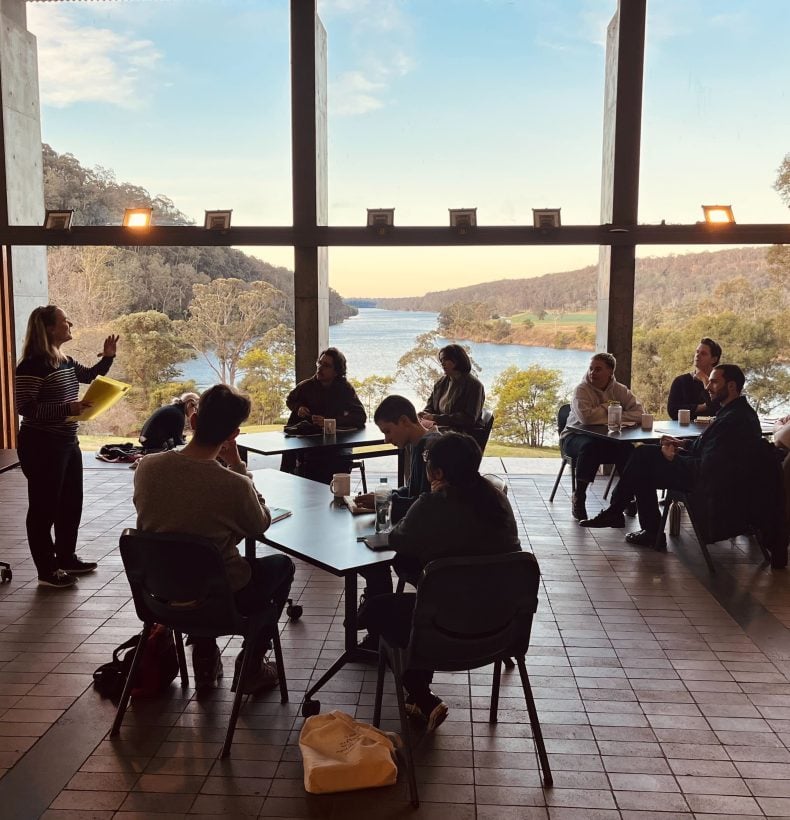
Australia Theatre for Young People
Playwriting
2025
Read MorePatricia Wood is a dancer, choreographer, teacher and performer.
Her choreographic research focuses on the embodied practice of transmission, ephemerality and memory, and encompasses radio, text and IRL performances. She grew up in Cairns, Far North Queensland on Yidinji land, and spent a lot of her childhood swimming in various bodies of water, devouring mangoes, and not wearing shoes. She now lives and works on Gadigal land, Sydney, and wears shoes much more often. Patricia has developed a number of works including, So far sonar (2022), Transmission Solo (2019), Dance Pirate Radio – Telepathic Democracy (2018), Trish & Trisha (2016), A Re-Enactment (2015), and 11 Steps (2012). She received a Master of Research from Macquarie University (2016), was a board member for Critical Path (2018-2020), a teaching artist with Sydney Dance Company (2016-current) and managed artist-run space, ReadyMade Works (2017-2019). Her writing has been published in Un Magazine and Critical Dialogues and she is currently working with Dr Amanda Card at Sydney University as a research assistant.
Alex Karaconji is a Sydney-born artist working across a range of materials including animation, ink and oil paint.
A consistent theme and preoccupation in his work is everyday life, or as the nineteenth century poet, Charles Baudelaire, once described as “the epic side of actual life”. His work has featured several times in the Australian International Animation Festival, and he was a finalist in the Dobell Prize. His work has also been collected by private and public institutions.
In this Bundanon residency, Alex and Patricia will explore the visual possibilities of textual slippage, using hand drawn animations in response to Franz Kafka’s The Metamorphosis. The Metamorphosis tells the story of Gregor Samsa and his transformation into an “enormous insect”. The original term that Kafka uses, Ungeziefer, poses an interesting challenge for artistic interpretation. It precludes any definitive form. In our response, we will honour this lexical ambiguity through the use of two well-suited mediums: the self-erasing, self-creating medium of animation; and the ephemeral yet embodied residue of choreography.